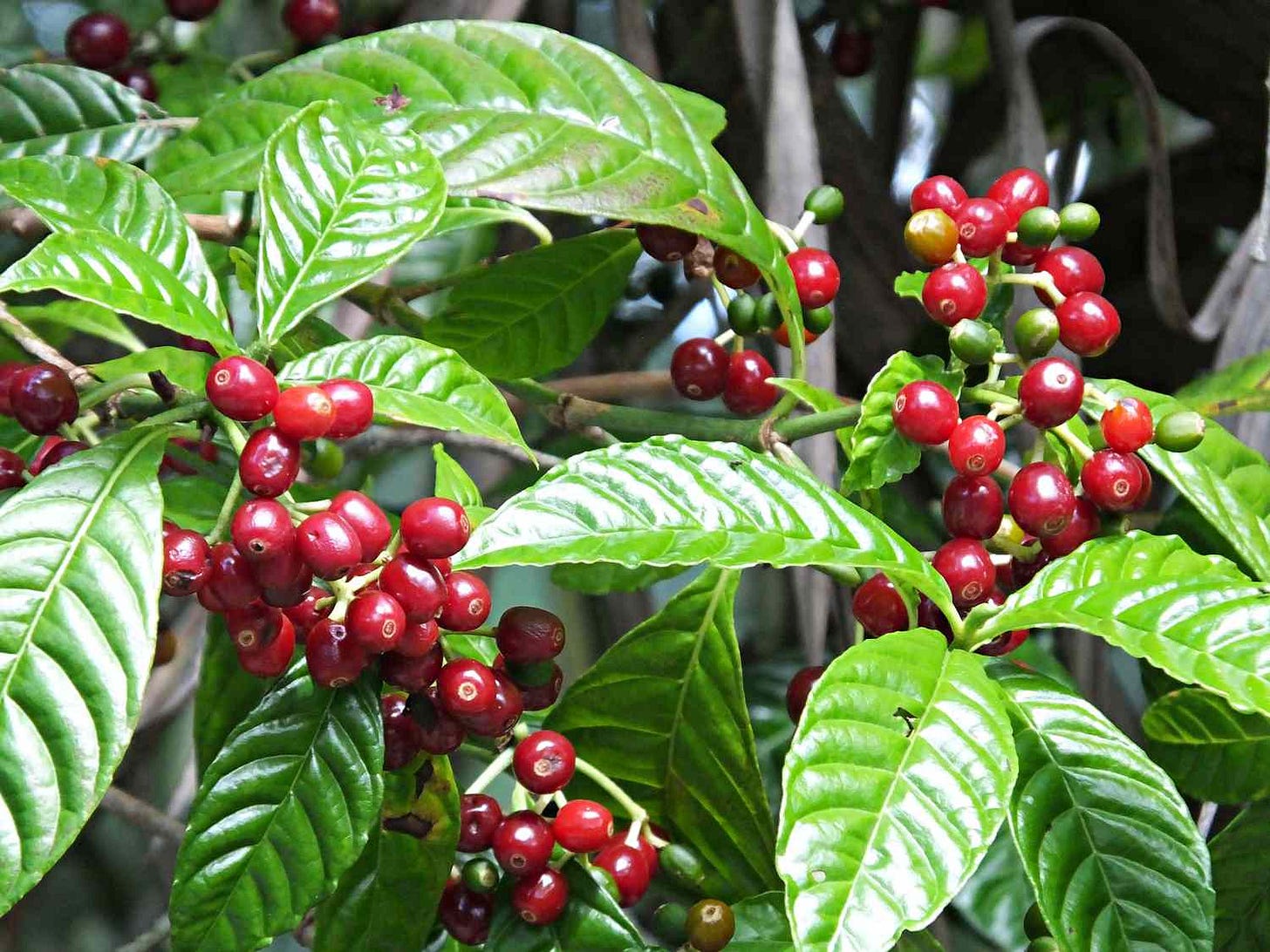From Chromosomes to Cultivation: the Evolutionary History of Coffee
Genomics elucidates the evolution of coffee
Subscribe to Genomely for the latest discoveries and in-depth analyses in your inbox.
Thank you to our subscribers for your continued support and passion for science!

The world of coffee is as complex as it is compelling, especially when considering the genetic history of Coffea arabica, the source of about 60% of global coffee production. This beloved species is a staple of morning routines and a focal point of scientific study due to its rich genetic history and pivotal role in agriculture. Recent advances in genomics have provided novel insights into the genetic history and makeup of C. arabica, which may shape the future of coffee breeding.
The Genetic Structure of Coffea arabica
Coffea arabica is an allotetraploid—a hybrid with four sets of chromosomes, derived from two diploid progenitors, Coffea canephora (Robusta coffee) and Coffea eugenioides. This hybridization event occurred between 350,000 and 610,000 years ago and was followed by several bottleneck events. These bottlenecks, periods when the genetic diversity of a population is sharply reduced, have significantly narrowed the genetic variation within cultivated C. arabica.
Chromosomal-level genome assemblies of C. arabica and its progenitor species have enabled these and other insights. For example, there is a remarkable conservation of genome structure between the diploid progenitors and their tetraploid descendants. Interestingly, despite the genomic upheaval typically associated with such significant hybridization events—often leading to genomic shock or dominant subgenome expressions—C. arabica exhibits a balanced coexistence of its subgenomes.
Historical Context and Cultivar Development
Coffea arabica was first cultivated in Yemen during the 15th century, spreading globally over the next centuries. Historical cultivars still dominate today's coffee plantations. However, these lineages suffer from low genetic diversity due to the species’ history of severe bottlenecks, making them susceptible to diseases like coffee leaf rust (Hemileia vastatrix).
Interestingly, a naturally occurring hybrid between C. arabica and C. canephora discovered in Timor in 1927 has introduced genes responsible for rust resistance into modern Arabica varieties. This crossbreeding has helped mitigate some of the vulnerabilities of C. arabica—but at the cost of beverage quality.
Breeding a resilient future
High-quality genome assemblies for C. arabica and its diploid ancestors provide a detailed map to guide breeding efforts to improve disease resistance and climate adaptability. Understanding the specific loci related to pathogen resistance can inform targeted breeding strategies, potentially introducing robustness into the cultivated lines without compromising coffee quality.
Genomic insights also highlight the importance of genetic diversity in breeding programs. Despite the historical bottlenecks, genetic diversity remains, especially among wild C. arabica accessions. These wild strains, particularly those from the forests of Ethiopia and surrounding regions, represent a valuable reservoir of genetic variation that could enrich commercial strains’ flavor and pathogen resistance.
Reference: Salojärvi, J., Rambani, A., Yu, Z. et al. The genome and population genomics of allopolyploid Coffea arabica reveal the diversification history of modern coffee cultivars. Nat Genet 56, 721–731 (2024). https://doi.org/10.1038/s41588-024-01695-w




